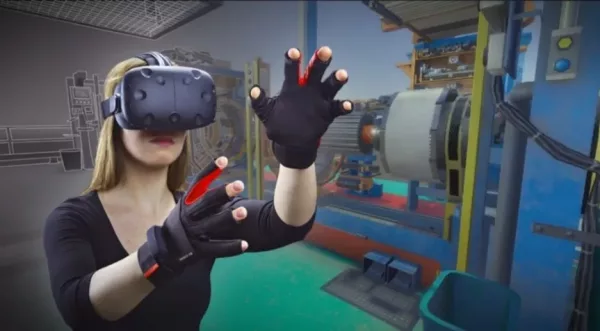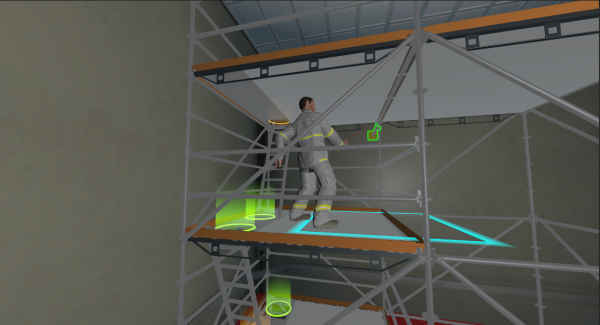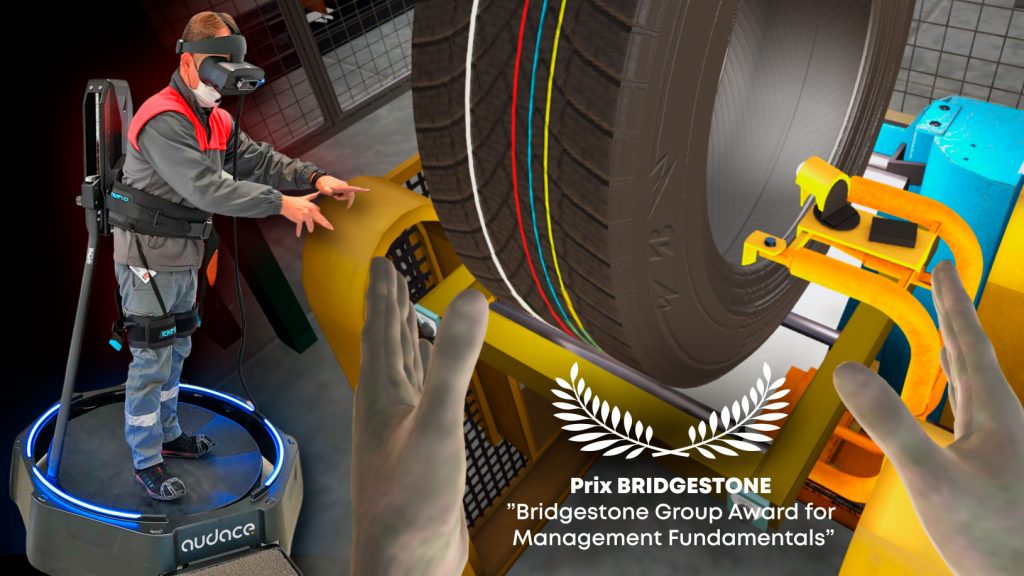When it comes to developing virtual reality training tools, a common question arises: What is the return on investment (ROI)? AUDACE carries out numerous projects in virtual reality. Indeed, AUDACE can help you estimate the return on investment (ROI) of VR experiences. AUDACE is even able to unveil certain additional benefits that were not initially envisioned.
First ROI factor: Cost reduction related to training.
Each training content project has its own specificities, whether it’s job discovery, awareness, training on complex operations, or equipment operation. There is no mathematical formula that can measure the cost savings achieved through immersive training and is universally applicable to all situations. Nevertheless, it is possible, by taking the time to reflect and considering observed assumptions from existing projects, to estimate the cost reduction associated with this training modality. The calculation takes into account various factors such as:
- Reduction in training time (~50% for a technical vocational training initially offered through an apprenticeship program).
- La réduction des frais logistiques de la formation (location de matériel, frais de vie, …) : la formation vient à l’apprenant et non l’inverse.
- Reduction in the immobilization of productive resources dedicated to training. In the case of creating a dedicated digital twin for training, it is possible to retain all production resources (human and material) without immobilization.
- Reduction in costs of “wasted” raw materials due to errors during training or lack of practice in job placement.
- Reduction in candidate dropout rate. Indeed, certain professions can have demanding working conditions (environment, physical exertion, stress related to operations, etc.). A virtual reality training allows learners to gradually become familiar with the profession and its constraints. This reduces the challenges of job placement.
As an example, AUDACE, in collaboration with its industrial clients (including ORANO and BRIDGESTONE), has observed that virtual training reduces the onboarding time by an average of 50%. Indeed, VR simulators allow for repetitive and varied work operations. The configuration of a VR training exercise takes just a minute! Sometimes it takes several hours to prepare the same exercise in real conditions. Moreover, all situations can be reproduced in virtual reality. Under normal conditions, it is impossible to program events such as breakdowns, incidents, etc., which slows down the progress of learners.

2nd factor: Operational excellence of employees
VR training helps overcome many limitations and obstacles encountered in traditional in-person training.
With digital tools, it is possible to repeat operations as many times as needed. In-person training requires preparation time between two training sessions. On the other hand, immersive scenarios can be linked seamlessly without interruption. The real-time practice time during training is thus increased.
Moreover, all situations can be addressed during virtual training. Whether it’s dangerous situations for the operator, rare occurrences, or scenarios that are impossible to replicate on demand. These skills are usually acquired after several years of “learning by doing” experience.
Some of our clients have expanded digital training to a wider audience to make their teams more flexible. Once the investment for training is made, deploying it to a larger number of employees represents a negligible cost.
Furthermore, digital tools, especially immersive solutions, allow for the transmission of company standards to all users. Written work method sheets can be interpreted differently by the reader. In contrast, a scenario in virtual reality leaves no room for interpretation. AUDACE observes significant differences between the business processes imagined in the design office, the complex reality of the field, and the opinions of trainers. That is why the creation of virtual reality training is necessary. This training involves an expert trainer, a methods and processes manager, and possibly a workplace safety manager. It allows bringing together the quality requirements, operational reality, and employee safety into a single tool.
En effet, chaque serious accident costs a company a significant amount of money. Avoiding even a single severe accident is enough to make a virtual reality training financially viable.

3rd factor: Benefit on the company's image and attractiveness.
This third factor is more difficult to estimate and also more unexpected. A training in virtual, mixed, or augmented reality naturally has an innovative character, as the practice is still not widely spread. However, there are numerous opportunities for truly distinctive innovation: creating original educational pathways, leveraging new features of virtual or mixed reality headsets, integrating with physical equipment interfaces, and more.
Since AUDACE began creating immersive experiences, not a single year has passed without them receiving an award or recognition for their innovation.
This contributes to the attractiveness of the company. The younger generations are naturally drawn to immersive technologies. As a result, AUDACE’s creations are consistently featured in its clients’ trade shows and exhibitions. It showcases the company’s innovations, recruits young talents, and presents its products to its own clients.

To conclude, let’s recall the testimony of Sébastien Tranchant, Head of Talent Acquisition, Talent Management, Learning & Development at Bridgestone, following the implementation of a blended learning program, including a theoretical part and a practical part on a virtual reality tire manufacturing simulator (developed by Audace) and a digital twin:
« This comprehensive training program has allowed us to increase productivity and ensure the safety of our employees by reducing safety incidents and quality issues by 30 to 50%. Furthermore, significant economies of scale have been achieved. Specifically, we have reduced the immobilization of production equipment required for training by 80% and the immobilization of human resources dedicated to this purpose by 90%. Many other positive impacts have been revealed, such as the enhanced reputation of the company featured in national media outlets… »

